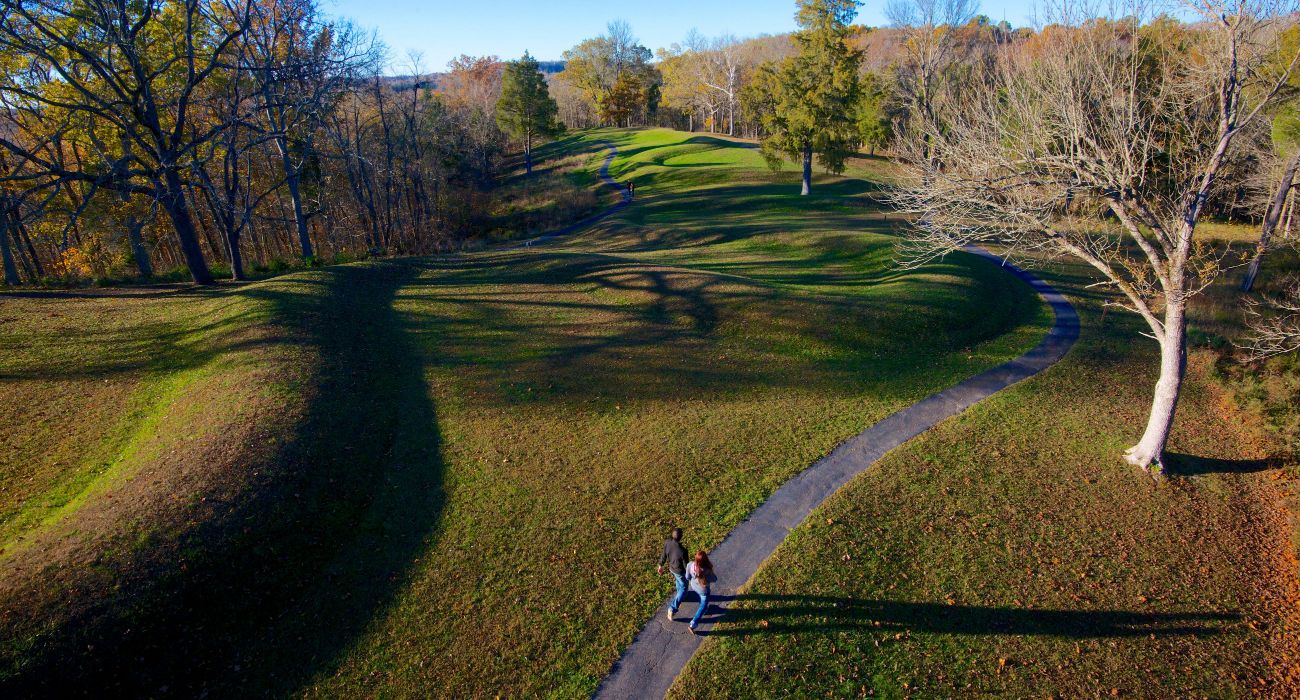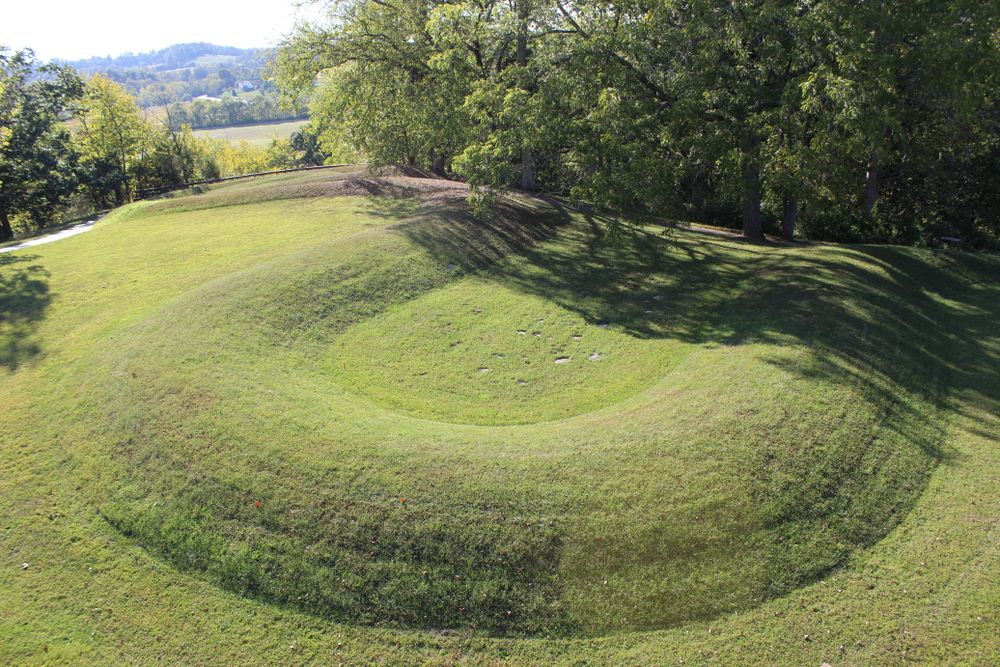Quick Links
The Great Serpent Mound is one of the most unique attractions in Ohio. It is a giant 1,348-foot-long prehistoric effigy mound of a giant serpent. The lands making up the United States have a long and rich Native American history. Get a glimpse into the people who have long called the lands home on via Native American heritage tours.
The Great Serpent Mound is a reminder of the deep history of the region and offers a peak back in time when the world was very different. The Great Serpent Mound may remind people of the perplexing massive and ancient Nazca Lines in Peru.
The Great Serpent Mound In Ohio: The Largest Effigy Of Prehistoric Times
The Great Serpent Mound is a pre-historic effigy mound and is the largest effigy mound in the shape of an animal anywhere from prehistoric times. It is found in Peebles in southern Ohio and has been excavated multiple times since the late 1800s.
The effigy is built in the shape of a giant sinuous snake with a curled tail and seven winding coils along its body. The head at the east end of the mound. The head of the snake has been the matter of some dispute with some thinking an oval shape representing a large eye, while others say it is an egg or something being swallowed.
The Great Serpent Mound Size
- Length: 1,348 feet or 411 meters
- Height: 3.9 to 4.9 feet or 1.2 to 1.5 meters
- Width: 19.7 to 24.9 feet or 6 to 7.6 meters
Interestingly, the Serpent Mount is located on a high plateau on the site of a 300 million-year-old meteor impact crater. The crater is between 5 and 8.7 miles in diameter and is also called the Serpent Mound crater.
Who Built Ohio's Serpent Mound & When Was It Built?
Who knows who built it and why it was built? It is possible it was built for some spiritual purpose (it is known that many native cultures on the continent revered snakes). Burial mounds near Serpent Mound may indicate it had a mortuary function - perhaps to guide the spirits (there are no artifacts or graves in the mound itself). It has been suggested that the builders of the Serpent Mound may have been the Early Woodland Andena Culture (which dates between 500 BC and 200 AD) or the Late Prehistoric Fort Ancient culture (dates between 1000 and 1650 AD).
While researchers may not know which culture built the mound, it is known that these two ancient cultures inhabited the area. Carbon dating of charcoal samples has revealed conflicting dates. It's possible it was built around 300 BC - which would make it much older than the famous mounds of Cahokia. The three burial mounds were built by both cultures - two by the Adena culture and one by the Fort Ancient culture.
Despite archeological research for more than a century, the Great Serpent Mound remains shrouded in mystery. No one really knows the origins of the mound. Like the mound in Cahokia, the Serpent Mound would have been built by hand basket by basket without the aid of metal digging tools.
What To Know About Planning A Trip To The Serpent Mound In Ohio
Visiting the Serpent Mound is one of the great attractions visitors can check out while enjoying a family road trip in the Midwest. It is found around 73 miles to the east of the modern city of Cincinnati.
The Serpent Mound is managed by the Ohio History Connection which has built an observation tower and the Serpent Mound museum. The Serpent Mound Observation Tower was built in 1908, but it was closed for the season as of the time of writing (March 2023) due to needing repairs. It is expected that repair work will start in 2024.
- Serpent Mound Admission Fee: $8 Per Vehicle
- Address: 3850 State Route 73, Peebles, OH, USA
Serpent Mound Opening Hours - April 1 to November 19:
- Mondays: Closed
- Tuesdays to Saturdays: 10.00 am to 5.00 pm
- Sundays: Noon to 5.00 pm
There are special hours for solstices and equinoxes - refer to the Ohio History Connection website for more details. Outside of opening hours, people are not permitted to visit, and visiting after the gates are closed is considered trespassing. Pets are welcome to the site but need to be on a leash. While in Ohio, take the time to explore the many other historic sites all over the modern state of Ohio.
There are lots of mounds all over the Midwest and down the Mississippi. While the mounds of Cahokia are the most famous, Emerald Mound is the second-largest mound and is found in the state of Mississippi.





